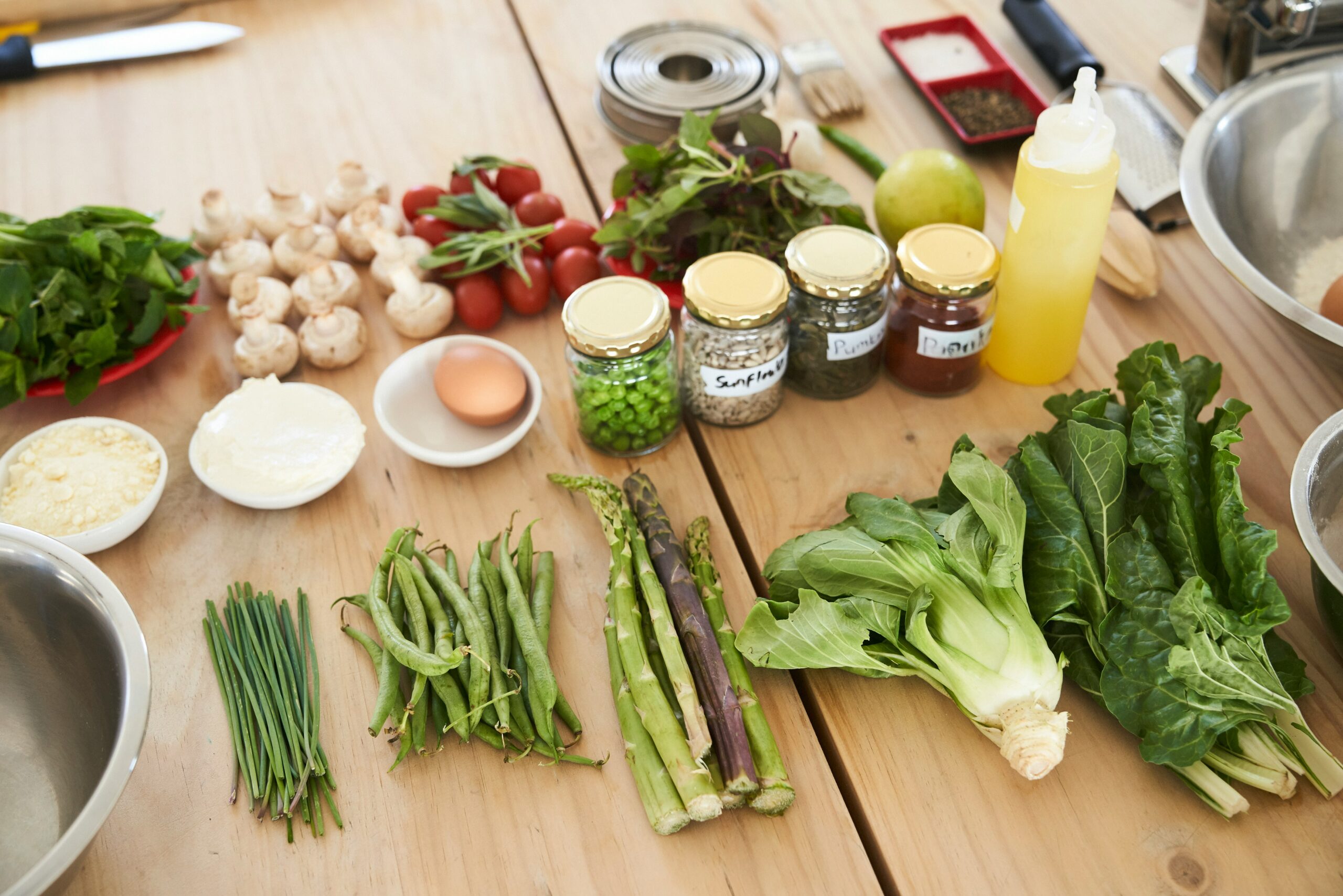Swapping out steak for lentils might not sound like the most thrilling adventure, but for us, it’s been a life-changing one. We’re two teachers living in rural Far North Queensland, navigating the dusty roads, limited grocery options and the occasional raised eyebrow as we transition to a plant-based diet.
With Emily in the kitchen wearing her apron, this journey has been about health, sustainability and a whole lot of trial and error.
If you’re wondering whether going plant-based is doable, here’s our story of how we made it work.
Why We Went Plant-Based: The Personal and Planetary Push
Our shift didn’t come from watching a single documentary or reading a single book. It came slowly after researching and reading articles about climate change, having chats about animal welfare and a growing concern for our planet.
As teachers, we try to walk the talk. We want to model conscious living, especially in a time when environmental issues are no longer abstract problems but real-world challenges that the next generation will inherit. For us, reducing meat and dairy was one practical way to take action.
We live in one of the most beautiful parts of the world. FNQ is hot and dusty but also rich in biodiversity. But it’s also on the frontline of climate change. Coral bleaching, heatwaves, and biodiversity loss are happening in our backyard. The more we learned, the more plant-based eating felt like the right path for us.
What Going Plant-Based Looked Like
We didn’t wake up one day and just throw all the meat in our freezer out. It occurred gradually. We worked our way through our last few packets of meat and then the challenge began! Emily started experimenting in the kitchen and within the first week I was sold.
Living rurally added an extra layer of challenge. We don’t have many cafés down the road, let alone vegetarian ones. We were intentional by planning meals, stocking up when we went to Cairns and learning how to rehydrate chickpeas.
Emily’s creativity has been key! Honestly, I just show up hungry and grateful.
Some of our favourite go-to meals now include:
- DIY pizzas (yes, we make the dough)
- Mexican bean tacos (with homemade flatbread)
- Pumpkin, chickpea, kale and quinoa salad
- Beetroot, Pumpkin and pearl cous cous salad
- Rehydrated chickpeas
I believe that our success is because we haven’t been too strict. We still occasionally eat meat and cheese when we go out or we’re having dinner at our friends, but we don’t buy it.
How a Plant-Based Diet Changed Our Health and Habits
To be honest, we haven’t noticed a huge difference. But we ate pretty healthy before switching to a plant-based diet anyway.
We’ve had to learn about nutrition properly. It’s important to keep an eye on iron, B12, protein, and omega-3s. We find ways to sneak protein into everything. We’ve even got a little veggie garden going now, mostly herbs and leafy greens that survive the heat.
Read: How to Create a DIY Raised Vegetable Garden for Under $30
Meal planning has become a routine and we actually waste less food and have really REALLY good lunches. We’ve saved money too, vegetables are way cheaper than steak or mince, especially out here.
And the biggest change? Our mindset. Food feels like a conscious choice now. Every meal is a little act of care, for us, for animals, for the planet.
Rural Plant-Based Life: Tips for Making It Work
We get it, rural FNQ isn’t exactly Melbourne when it comes to vegan options. But if we can do it here, so can you. Here’s what’s helped us:
1. Plan ahead
Bulk shop when you’re near a bigger centre like Cairns or Townsville. Stock up on staples, chickpeas, lentils, oats, nuts, coconut milk, tofu, and spices.
2. Support local where you can
We buy from the local market or roadside stalls when possible. Seasonal produce is usually cheaper and fresher.
3. Keep it simple
You don’t need fancy vegan products. Whole foods like beans, rice, veg, and spices go a long way.
4. Learn a few staple meals
A good curry, a stir-fry, a soup, and a baked dish can take you far.
5. Make friends with your freezer
Batch cook and freeze meals for busy weeks or when fresh produce is low.
6. Set realistic goals
Adding an extra vege meal a week can make a difference. Just do your best. It’s not about labels, it’s about impact.
Switching to a plant-based diet in rural Australia isn’t always easy but it’s worth it. It’s reconnected us with food, with nature and with each other. And it’s helped us feel like we’re living in line with our values, even if sometimes we do go to the pub and really want that parmi.
For anyone else living remote, teaching full-time or just feeling a bit stuck on where to start: take it slow, find your why and give yourself grace. Change doesn’t have to be loud. Sometimes, it just starts with one quiet decision, made around the dinner table.
FAQs About Going Plant-Based in Rural Australia
Is it expensive to eat plant-based in the bush?
It can be if you rely on specialty vegan products, but we stick to basics like lentils, rice, pasta, canned beans, seasonal veg, and local produce. It’s often cheaper than buying meat and processed foods.
How do you get enough protein without meat?
We’re still working on this but we eat lots of legumes, nuts, seeds, and whole grains. A little planning goes a long way.
What about iron and B12?
We eat iron-rich foods like lentils, spinach, and fortified cereals.
How do you deal with social situations?
This might not be everyone’s jam, but if it’s cooked for us we eat it. And if we’re cooking for friends, we make sure that they know it will be a vegetarian meal. Most people are curious, not judgemental.
Is a plant-based diet really better for the environment?
Yes. Studies consistently show that reducing meat and dairy lowers your carbon footprint, conserves water, and reduces land use. For a region like FNQ, where climate impacts are already being felt, it’s a powerful way to take action.

